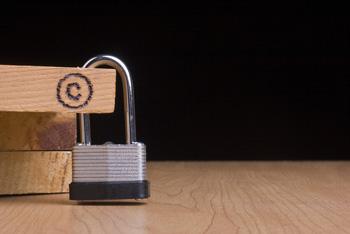Copyright Protection Background Quick Overview
 A copyright is a set of exclusive rights that is granted to a person upon his or her creation of an original work. These rights can include the right to copy that work, distribute it, and adapt the work as well. As a copyright holder, the author also has the right to license the copyright, transfer it, or assign it to another party.
A copyright is a set of exclusive rights that is granted to a person upon his or her creation of an original work. These rights can include the right to copy that work, distribute it, and adapt the work as well. As a copyright holder, the author also has the right to license the copyright, transfer it, or assign it to another party.
The copyright is only valid for a certain period of time before it is automatically released to the public domain. When works reach the public domain, it means that they are no longer under a copyright because the copyright has expired.
The copyright law is an integral part of American law intended to enforce the general notion that an author should have sole ability to reap the benefits of his or her hard work and creativity for at least a period of time. Without copyright law, a person's labor into creative thinking would not benefit the creator and acknowledgment would go unnoticed. Copyright protection and copyright law both prevent this from occurring.
Copyright law emerged in Great Britain from the invention of the printing press, which made the duplication of books and other works far easier than before. As a result, in the 15th and 16th centuries, governments began placing control over printers that existed across Europe. They were required to have licenses to trade and produce any books to be sold. In typical cases, a printer would be given exclusive rights to a certain book to be printed and sold for a period of several years before it finally expired. This was the origin of the modern copyright law in effect today.
Today, copyright laws are constantly changing and evolving alongside technology. With the emergence of the Internet and other electronic creative mediums, copyright law was needed to cater to these specific frontiers. Copyrights have been extended from literary, dramatic, and musical works to computer software and Internet-based works.
The Copyright Protection Office in the United States has been around for decades to promote creativity among unique thinkers in all creative mediums by establishing and maintaining a working national copyright system. Their services have helped to enforce copyright law and allowed for a standardized system of registering, licensing and transferring copyrights.
Related Topics
- Intellectual Property Rights Act of 2008 Overview
- Quick Overview into the Copyright Infringement Punishment
- Quick Internet Piracy Overview
- Blogger’s guide to avoid copyright violation
- Quick Guide to the Legal Context of Branding
- What Is Copyright Trolling
- Trademarks At A Glance
- What you Must know about the Copyright Logo
- Secondary Transmission Overview
- Important Facts About Copyright Attorney